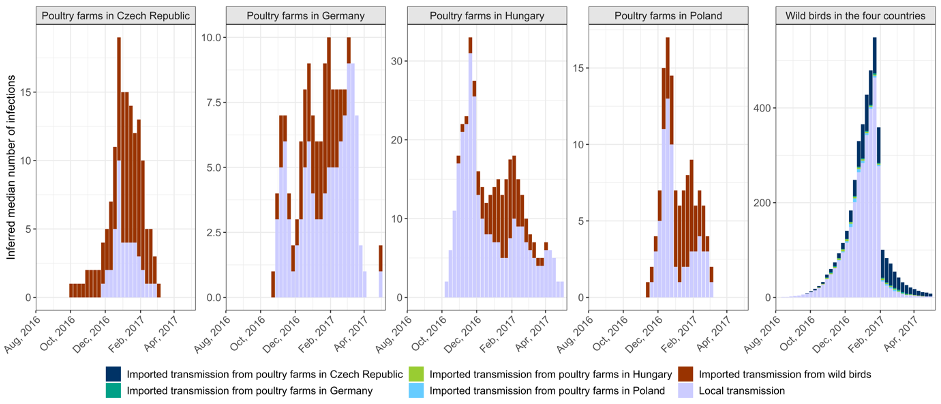New publication on phylodynamics at the poultry-wild bird interface
Claire Guinat and colleagues used phylodynamic approaches to disentangle the role of poultry farms and wild birds in the spread of highly pathogenic avian influenza virus in Europe.
In winter 2016-17, Europe was severely hit by an unprecedented epidemic of highly pathogenic avian influenza virus (HPAIV), with a significant detrimental impact to animal health, wildlife conservation and livestock economic sustainability. But were poultry farms or wild birds the real driver of spread? Obviously we cannot ask the birds themselves. Instead, Claire and her colleagues addressed this question by applying phylodynamic tools to HPAIV sequences collected during the epidemic.
They showed that, in some countries, the epidemic was dominated by farm-to-farm transmission, while in others, the epidemic was dominated by wild bird-to-farm transmission.

This allowed Claire and her colleagues to inform policymakers that efforts are necessary to understand how farms are connected and that more sustainable prevention strategies should be developed to reduce HPAIV exposure from wild birds.
- You can read the full paper external pagehere!
- Claire and her project were profiled by EU GrantsAccess, which you can read about external pagehere.
- You can also read more about the EU-funded project external pagehere.
